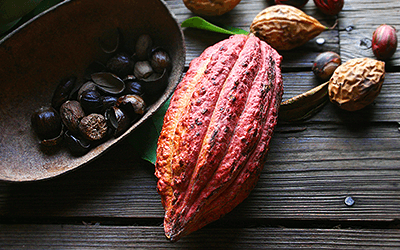In our modern, fast-paced lives, focusing on our health by paying attention to our daily diet is paramount. An easy and impactful method to enhance nutrition is by increasing our intake of greens. Despite their abundant nutrients and health advantages, many struggle to integrate them into their daily meals. Let's delve into the significance of greens, uncover their myriad health benefits, explore simple strategies to incorporate them into our diet, and grasp the profound advantages of embracing this dietary shift.
What Are Greens?
For many, the term "greens" conjures images of leafy green vegetables. However, the category of greens technically includes all vegetables that contain chlorophyll, the pigment responsible for their green hue.
Common examples found in most kitchens include:
- Leafy greens, such as spinach, lettuce, and arugula
- Cruciferous vegetables, such as broccoli, Brussels sprouts, and cabbage
- Non-cruciferous vegetables, such as zucchini and asparagus
- Herbs, such as cilantro, basil, and parsley
Health Benefits of Eating Greens
Greens boast an impressive nutrient profile, providing essential vitamins, minerals, and phytochemicals crucial for optimal bodily functions. Extensive scientific research consistently highlights the diverse health benefits associated with incorporating more greens into our diets, including:1,2,3,4,5
Antioxidant Power
Many greens are abundant in antioxidants like beta-carotene, lutein, and zeaxanthin, which combat free radicals, thus mitigating cell damage and inflammation while lowering the risk of chronic diseases.
Heart Health Support
Eating greens is associated with a lower risk of cardiovascular disease and atherosclerosis. Greens like spinach and kale are especially beneficial for heart health as they contain compounds, like nitrates, that help lower cholesterol levels and reduce blood pressure.
Digestive Support
Greens serve as an excellent source of dietary fiber, facilitating regular bowel movements and preventing constipation. Additionally, they harbor sulfoquinovose, a carbohydrate type that nurtures beneficial gut bacteria, fostering gut health.
Blood Sugar Regulation
Integration of greens into one's diet aids in regulating blood sugar levels, particularly beneficial for individuals managing diabetes or insulin resistance. With a low glycemic index, greens contribute to maintaining stable blood glucose levels.
How to Eat More Greens
By adding more greens into your daily meals, you effortlessly infuse vibrant colors and vital nutrients into your diet. Consider these flavorful suggestions:
Green smoothies, like this antioxidant camu camu smoothie, are an easy and delicious way to boost your intake of greens, especially when paired with naturally sweet fruits like mango.
Salads, such as this green goddess salad, are quick to put together and pack a powerful nutritional punch. When combined with protein and healthy fats, greens are a great base for a simple yet balanced meal.
Wraps and sandwiches, like these spinach tofu pita pockets, are a flavorful idea for a quick meal. You can even use lettuce leaves as wraps, replacing traditional tortillas for a lighter, veggie-filled option.
Quiches and omelettes, such as this spinach mushroom & feta quiche, offer versatility as they can be easily enhanced with a variety of greens for a quick, made-ahead breakfast or lunch.
Dips, salad dressings, and sauces, like this chimichurri sauce, usually call for fresh greens, such as basil, mint, and cilantro, adding a burst of flavor and nutrients to a wide range of meals.
Incorporating more greens into your diet is a simple yet impactful way to enhance your nutrition. From providing essential nutrients and antioxidants to supporting digestive health, heart health, and blood sugar regulation, greens offer a multitude of benefits. By trying out easy and delicious ways to add greens to your meals, you can enjoy a healthier lifestyle and reap the rewards of a plant-rich diet. Start today by embracing the vibrant colors and nutritional goodness of greens on your plate!
Sources
- Harvard Health Publications, Salad greens: Getting the most bang for the bite | Keep heart disease at bay with a salad a day?
- Journal of Nutritional Science, Increased vegetable intake improves glycaemic control in adults with type 2 diabetes mellitus: a clustered randomised clinical trial among Indonesian white-collar workers, 2022
- University of Kentucky, The Health Benefits of Dark Green Leafy Vegetables, 2013
- West Virginia University, Leafy Greens are Packed with Vitamins, 2023
Footnotes:
- JRSM Cardiovascular Disease. (2016). The effect of green leafy and cruciferous vegetable intake on the incidence of cardiovascular disease: A meta-analysis. Retrieved March 25, 2024, from https://www.ncbi.nlm.nih.gov/pmc/articles/PMC4973479/ University of Illinois. (2022). Eat green foods for better health. Retrieved March 25, 2024, from https://extension.illinois.edu/blogs/healthy-lifestyles-last-blog/2022-02-08-eat-green-foods-better-health
- European Journal of Epidemiology. (2021). Vegetable nitrate intake, blood pressure and incident cardiovascular disease: Danish Diet, Cancer, and Health Study. Retrieved March 25, 2024, from https://link.springer.com/article/10.1007/s10654-021-00747-3
- Cardiovascular Journal of Africa. (2021). Dietary intakes of green leafy vegetables and incidence of cardiovascular diseases. Retrieved March 25, 2024, from https://www.ncbi.nlm.nih.gov/pmc/articles/PMC8756059
- Journal of Nutrition. (2006). A diet rich in green and yellow vegetables inhibits atherosclerosis in mice. Retrieved March 25, 2024, from https://pubmed.ncbi.nlm.nih.gov/16772454/






